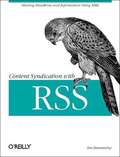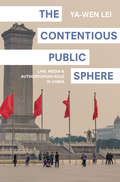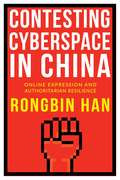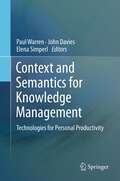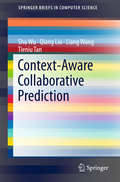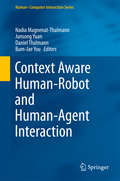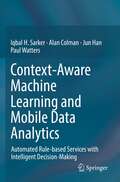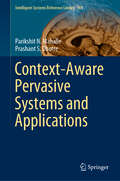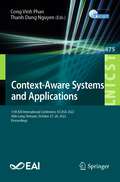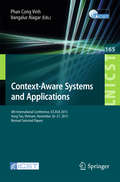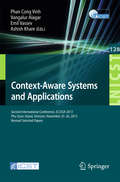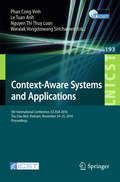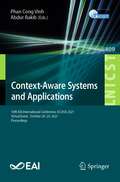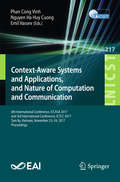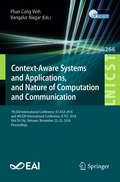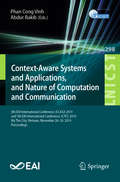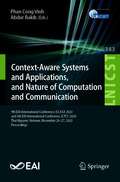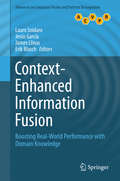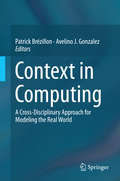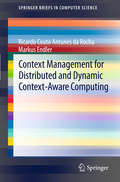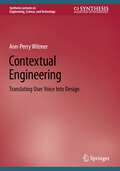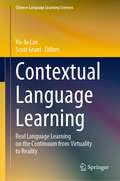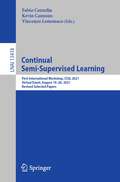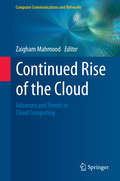- Table View
- List View
Content Syndication with RSS
by Ben HammersleyRSS is sprouting all over the Web, connecting weblogs and providing news feeds. Originally developed by Netscape in 1999, RSS (which can stand for RDF Site Summary, Rich Site Summary, or Really Simple Syndication) is an XML-based format that allows web developers to describe and syndicate web site content. Using RSS files allows developers to create a data feed that supplies headlines, links, and article summaries from a web site. Other sites can then incorporate them into their pages automatically. Although RSS is in widespread use, people struggle with its confusing and sometimes conflicting documentation and versions. Content Syndication with RSS is the first book to provide a comprehensive reference to the specifications and the tools that make syndication possible. Content Syndication with RSS offers webloggers, developers, and the programmers who support them a thorough explanation of syndication in general and RSS in particular. Written for web developers who want to offer XML-based feeds of their content, as well as developers who want to use the content that other people are syndicating, the book explores and explains metadata interpretation, different forms of content syndication, and the increasing use of web services in this field. This concise volume begins with an introduction to content syndication on the Internet: its purpose, limitations, and traditions, and answers the question of why would you consider "giving your content away" like this? Next, the book delves into the architecture of content syndication with an overview of the entire system, from content author to end user on another site. You'll follow the flow of data: content, referral data, publish-and-subscribe calls, with a detailed look at the protocols and standards possible at each step. Topics covered in the book include: Creating XML syndication feeds with RSS 0.9x and 2.0 Beyond headlines: creating richer feeds with RSS 1.0 and RDF metadata Using feeds to enrich a site or find information Publish and subscribe: intelligent updating News aggregators, such as Meerkat, Syndic8, and Newsisfree, and their web services Alternative industry-centric standards If you're interested in producing your own RSS feed, this step-by-step guide to implementation is the book you'll want in hand.
The Contentious Public Sphere: Law, Media, and Authoritarian Rule in China
by Ya-Wen LeiSince the mid-2000s, public opinion and debate in China have become increasingly common and consequential, despite the ongoing censorship of speech and regulation of civil society. How did this happen? In The Contentious Public Sphere, Ya-Wen Lei shows how the Chinese state drew on law, the media, and the Internet to further an authoritarian project of modernization, but in so doing, inadvertently created a nationwide public sphere in China—one the state must now endeavor to control. Lei examines the influence this unruly sphere has had on Chinese politics and the ways that the state has responded.Using interviews, newspaper articles, online texts, official documents, and national surveys, Lei shows that the development of the public sphere in China has provided an unprecedented forum for citizens to influence the public agenda, demand accountability from the government, and organize around the concepts of law and rights. She demonstrates how citizens came to understand themselves as legal subjects, how legal and media professionals began to collaborate in unexpected ways, and how existing conditions of political and economic fragmentation created unintended opportunities for political critique, particularly with the rise of the Internet. The emergence of this public sphere—and its uncertain future—is a pressing issue with important implications for the political prospects of the Chinese people.Investigating how individuals learn to use public discourse to influence politics, The Contentious Public Sphere offers new possibilities for thinking about the transformation of state-society relations.
The Contest over National Security: FDR, Conservatives, and the Struggle to Claim the Most Powerful Phrase in American Politics
by Peter RoadyA new history shows how FDR developed a vision of national security focused not just on protecting Americans against physical attack but also on ensuring their economic well-being—and how the nascent conservative movement won the battle to narrow its meaning, durably reshaping US politics.Americans take for granted that national security comprises physical defense against attacks. But the concept of national security once meant something more. Franklin Roosevelt’s vision for national security, Peter Roady argues, promised an alternate path for the United States by devoting as much attention to economic want as to foreign threats. The Contest over National Security shows how a burgeoning conservative movement and power-hungry foreign policy establishment together defeated FDR’s plans for a comprehensive national security state and inaugurated the narrower approach to national security that has dominated ever since.In the 1930s, Roosevelt and his advisors, hoping to save the United States from fascism and communism, argued that national security entailed protection from both physical attack and economic want. Roosevelt’s opponents responded by promoting a more limited national security state privileging military defense over domestic economic policy. Conservatives brought numerous concerns to bear through an enormous public relations offensive, asserting not just that Roosevelt’s plans threatened individual freedom but also that the government was less competent than the private sector and incapable of delivering economic security.This contest to define the government’s national security responsibilities in law and in the public mind, Roady reveals, explains why the United States developed separate and imbalanced national security and welfare states, with far-reaching consequences. By recovering FDR’s forgotten vision, Roady restores a more expansive understanding of national security’s meanings as Americans today face the great challenges of their times.
Contesting Cyberspace in China: Online Expression and Authoritarian Resilience
by Rongbin HanThe Internet was supposed to be an antidote to authoritarianism. It can enable citizens to express themselves freely and organize outside state control. Yet while online activity has helped challenge authoritarian rule in some cases, other regimes have endured: no movement comparable to the Arab Spring has arisen in China. In Contesting Cyberspace in China, Rongbin Han offers a powerful counterintuitive explanation for the survival of the world’s largest authoritarian regime in the digital age.Han reveals the complex internal dynamics of online expression in China, showing how the state, service providers, and netizens negotiate the limits of discourse. He finds that state censorship has conditioned online expression, yet has failed to bring it under control. However, Han also finds that freer expression may work to the advantage of the regime because its critics are not the only ones empowered: the Internet has proved less threatening than expected due to the multiplicity of beliefs, identities, and values online. State-sponsored and spontaneous pro-government commenters have turned out to be a major presence on the Chinese internet, denigrating dissenters and barraging oppositional voices. Han explores the recruitment, training, and behavior of hired commenters, the “fifty-cent army,” as well as group identity formation among nationalistic Internet posters who see themselves as patriots defending China against online saboteurs. Drawing on a rich set of data collected through interviews, participant observation, and long-term online ethnography, as well as official reports and state directives, Contesting Cyberspace in China interrogates our assumptions about authoritarian resilience and the democratizing power of the Internet.
Context and Semantics for Knowledge Management: Technologies for Personal Productivity
by John Davies Paul Warren Elena SimperlKnowledge and information are among the biggest assets of enterprises and organizations. However, efficiently managing, maintaining, accessing, and reusing this intangible treasure is difficult. Information overload makes it difficult to focus on the information that really matters; the fact that much corporate knowledge only resides in employees' heads seriously hampers reuse. The work described in this book is motivated by the need to increase the productivity of knowledge work. Based on results from the EU-funded ACTIVE project and complemented by recent related results from other researchers, the application of three approaches is presented: the synergy of Web 2.0 and semantic technology; context-based information delivery; and the use of technology to support informal user processes. The contributions are organized in five parts. Part I comprises a general introduction and a description of the opportunities and challenges faced by organizations in exploiting Web 2.0 capabilities. Part II looks at the technologies, and also some methodologies, developed in ACTIVE. Part III describes how these technologies have been evaluated in three case studies within the project. Part IV starts with a chapter describing the principal market trends for knowledge management solutions, and then includes a number of chapters describing work complementary to ACTIVE. Finally, Part V draws conclusions and indicates further areas for research. Overall, this book mainly aims at researchers in academia and industry looking for a state-of-the-art overview of the use of semantic and Web 2.0 technologies for knowledge management and personal productivity. Practitioners in industry will also benefit, in particular from the case studies which highlight cutting-edge applications in these fields.
Context-Aware Collaborative Prediction: Modeling Contextual Information For General Prediction Tasks (SpringerBriefs in Computer Science)
by Shu Wu Qiang Liu Liang Wang Tieniu TanThis book presents two collaborative prediction approaches based on contextual representation and hierarchical representation, and their applications including context-aware recommendation, latent collaborative retrieval and click-through rate prediction. The proposed techniques offer significant improvements over current methods, the key determinants being the incorporated contextual representation and hierarchical representation. To provide a background to the core ideas presented, it offers an overview of contextual modeling and the theory of contextual representation and hierarchical representation, which are constructed for the joint interaction of entities and contextual information. The book offers a rich blend of theory and practice, making it a valuable resource for students, researchers and practitioners who need to construct systems of information retrieval, data mining and recommendation systems with contextual information.
Context Aware Human-Robot and Human-Agent Interaction (Human–Computer Interaction Series)
by Daniel Thalmann Nadia Magnenat-Thalmann Junsong Yuan Bum-Jae YouThis is the first book to describe how Autonomous Virtual Humans and Social Robots can interact with real people, be aware of the environment around them, and react to various situations. Researchers from around the world present the main techniques for tracking and analysing humans and their behaviour and contemplate the potential for these virtual humans and robots to replace or stand in for their human counterparts, tackling areas such as awareness and reactions to real world stimuli and using the same modalities as humans do: verbal and body gestures, facial expressions and gaze to aid seamless human- computer interaction (HCI). The research presented in this volume is split into three sections: User Understanding through Multisensory Perception: deals with the analysis and recognition of a given situation or stimuli, addressing issues of facial recognition, body gestures and sound localization. Facial and Body Modelling Animation: presents the methods used in modelling and animating faces and bodies to generate realistic motion. Modelling Human Behaviours: presents the behavioural aspects of virtual humans and social robots when interacting and reacting to real humans and each other. Context Aware Human-Robot and Human-Agent Interaction would be of great use to students, academics and industry specialists in areas like Robotics, HCI, and Computer Graphics.
Context-Aware Machine Learning and Mobile Data Analytics: Automated Rule-based Services with Intelligent Decision-Making
by Paul Watters Jun Han Alan Colman Iqbal SarkerThis book offers a clear understanding of the concept of context-aware machine learning including an automated rule-based framework within the broad area of data science and analytics, particularly, with the aim of data-driven intelligent decision making. Thus, we have bestowed a comprehensive study on this topic that explores multi-dimensional contexts in machine learning modeling, context discretization with time-series modeling, contextual rule discovery and predictive analytics, recent-pattern or rule-based behavior modeling, and their usefulness in various context-aware intelligent applications and services. The presented machine learning-based techniques can be employed in a wide range of real-world application areas ranging from personalized mobile services to security intelligence, highlighted in the book. As the interpretability of a rule-based system is high, the automation in discovering rules from contextual raw data can make this book more impactful for the application developers as well as researchers. Overall, this book provides a good reference for both academia and industry people in the broad area of data science, machine learning, AI-Driven computing, human-centered computing and personalization, behavioral analytics, IoT and mobile applications, and cybersecurity intelligence.
Context-Aware Pervasive Systems and Applications (Intelligent Systems Reference Library #169)
by Parikshit N. Mahalle Prashant S. DhotreThis textbook explores the current challenges in and future prospects of context-aware pervasive systems and applications. The phenomenal advances in broadband technology and ubiquitous access to the Internet have transformed Internet computing into the Internet of Things (IoT), which is now evolving toward the Internet of Everything. Modern scientific, engineering, and business applications are increasingly dependent on machine-to-machine communication, wherein there is less human intervention. In turn, this creates a need for context-aware pervasive systems and applications in which RFID, sensors, and smartphones play a key role. The book provides an essential overview of context, context management, and how to perform context management in various use cases. In addition, it addresses context-aware computing and personalization, various architectures for context-aware systems, and security issues. The content is explained using straightforward language and easy-to-follow examples, case studies, technical descriptions, procedures, algorithms, and protocols for context-aware systems.
Context-Aware Systems and Applications: 11th EAI International Conference, ICCASA 2022, Vinh Long, Vietnam, October 27-28, 2022, Proceedings (Lecture Notes of the Institute for Computer Sciences, Social Informatics and Telecommunications Engineering #475)
by Cong Vinh Phan Thanh Dung NguyenThis book constitutes the 11th EAI International Conference of the International Conference on Context-Aware Systems and Applications, ICCASA 2022, held in Vinh Long, Vietnam, during October 27-28, 2022. The 14 revised full papers presented were carefully selected from 40 submissions. The papers cover a wide spectrum of modern approaches and techniques for smart computing systems and their applications.
Context-Aware Systems and Applications: 4th International Conference, ICCASA 2015, Vung Tau, Vietnam, November 26-27, 2015, Revised Selected Papers (Lecture Notes of the Institute for Computer Sciences, Social Informatics and Telecommunications Engineering #165)
by Phan Cong Vinh Vangalur AlagarThis book constitutesthe thoroughly refereed proceedings of the 4th International Conference onContext-Aware Systems and Applications, ICCASA 2015, held in Vung Tau, Vietnam,in November 2015. The 44 revised full papers presented were carefully selectedand reviewed from over 100 submissions. The papers cover a wide spectrum ofissues in the area of context-aware systems (CAS) and context-basedrecommendation systems. CAS is characterized by its self- facets such as self-organization, self-configuration,self-healing, self-optimization, self-protection and so on whose context awarenessused to dynamically control computing and networking functions. The overallgoal of CAS is to realize nature-inspired autonomic systems that can manage themselveswithout direct human interventions.
Context-Aware Systems and Applications: Second International Conference, ICCASA 2013, Phu Quoc Island, Vietnam, November 25-26, 2013, Revised Selected Papers (Lecture Notes of the Institute for Computer Sciences, Social Informatics and Telecommunications Engineering #128)
by Phan Cong Vinh Vangalur Alagar Emil Vassev Ashish KhareThis book constitutes the thoroughly refereed proceedings of the Second International Conference on Context-Aware Systems and Applications, ICCASA 2013, held in Phu Quoc Island, Vietnam in November 2013. The 36 revised full papers presented were carefully selected and reviewed from over 100 submissions and cover a wide spectrum of issues in the area of context-aware systems (CAS) and context-based recommendation systems.
Context-Aware Systems and Applications: 5th International Conference, ICCASA 2016, Thu Dau Mot, Vietnam, November 24-25, 2016, Proceedings (Lecture Notes of the Institute for Computer Sciences, Social Informatics and Telecommunications Engineering #193)
by Phan Cong Vinh Le Tuan Anh Nguyen Thi Thuy Loan Waralak Vongdoiwang SiricharoenThis book constitutesthe thoroughly refereed proceedings of the 4th International Conference onContext-Aware Systems and Applications, ICCASA 2015, held in Vung Tau, Vietnam,in November 2015. The 44 revised full papers presented were carefully selectedand reviewed from over 100 submissions. The papers cover a wide spectrum ofissues in the area of context-aware systems (CAS) and context-basedrecommendation systems. CAS is characterized by its self- facets such as self-organization, self-configuration,self-healing, self-optimization, self-protection and so on whose context awarenessused to dynamically control computing and networking functions. The overallgoal of CAS is to realize nature-inspired autonomic systems that can manage themselveswithout direct human interventions.
Context-Aware Systems and Applications: 10th EAI International Conference, ICCASA 2021, Virtual Event, October 28–29, 2021, Proceedings (Lecture Notes of the Institute for Computer Sciences, Social Informatics and Telecommunications Engineering #409)
by Phan Cong Vinh Abdur RakibThis book constitutes the refereed post-conference proceedings of the International Conference on Context-Aware Systems and Applications, held in October 2021. Due to COVID-19 pandemic the conference was held virtually. The 25 revised full papers presented were carefully selected from 52 submissions. The papers cover a wide spectrum of modern approaches and techniques for smart computing systems and their applications.
Context-Aware Systems and Applications, and Nature of Computation and Communication: 6th International Conference, Iccasa 2017, And 3rd International Conference, Ictcc 2017, Tam Ky, Vietnam, November 23-24, 2017, Proceedings (Lecture Notes of the Institute for Computer Sciences, Social Informatics and Telecommunications Engineering #217)
by Emil Vassev Nguyen Ha Huy Cuong Phan Cong VinhThis book constitutes the refereed post-conference proceedings of the International Conferences ICCASA and ICTCC 2017, held in November 2017 in Tam Ky City, Vietnam. The 23 revised full papers presented were carefully selected from 31 submissions. The papers of ICCASA cover a wide spectrum in the area of context-aware-systems. CAS is characterized by its self- facets such as self-organization, self-configuration, self-healing, self-optimization, self-protection used to dynamically control computing and networking functions. The papers of ICTCC cover formal methods for self-adaptive systems and discuss natural approaches and techniques for computation and communication.
Context-Aware Systems and Applications, and Nature of Computation and Communication: 7th EAI International Conference, ICCASA 2018, and 4th EAI International Conference, ICTCC 2018, Viet Tri City, Vietnam, November 22–23, 2018, Proceedings (Lecture Notes of the Institute for Computer Sciences, Social Informatics and Telecommunications Engineering #266)
by Phan Cong Vinh Vangalur AlagarThis book constitutes the refereed post-conference proceedings of the International Conferences ICCASA and ICTCC 2018, held in November 2018 in Viet Tri City, Vietnam. The 20 revised full papers presented were carefully selected from 30 submissions. The papers of ICCASA cover a wide spectrum in the area of context-aware-systems. CAS is characterized by its self- facets such as self-organization, self-configuration, self-healing, self-optimization, self-protection used to dynamically control computing and networking functions. The papers of ICTCC cover formal methods for self-adaptive systems and discuss natural approaches and techniques for computation and communication.
Context-Aware Systems and Applications, and Nature of Computation and Communication: 8th EAI International Conference, ICCASA 2019, and 5th EAI International Conference, ICTCC 2019, My Tho City, Vietnam, November 28-29, 2019, Proceedings (Lecture Notes of the Institute for Computer Sciences, Social Informatics and Telecommunications Engineering #298)
by Phan Cong Vinh Abdur RakibThis book constitutes the refereed post-conference proceedings of the International Conferences ICCASA and ICTCC 2019, held in November 2019 in My Tho, Vietnam. The 20 revised full papers presented were carefully selected from 33 submissions. The papers of ICCASA cover a wide spectrum in the area of context-aware-systems. CAS is characterized by its self- facets such as self-organization, self-configuration, self-healing, self-optimization, self-protection used to dynamically control computing and networking functions. The papers of ICTCC cover formal methods for self-adaptive systems and discuss natural approaches and techniques for computation and communication.
Context-Aware Systems and Applications, and Nature of Computation and Communication: 9th EAI International Conference, ICCASA 2020, and 6th EAI International Conference, ICTCC 2020, Thai Nguyen, Vietnam, November 26–27, 2020, Proceedings (Lecture Notes of the Institute for Computer Sciences, Social Informatics and Telecommunications Engineering #343)
by Phan Cong Vinh Abdur RakibThis book constitutes the refereed post-conference proceedings of the International Conferences ICCASA and ICTCC 2020, held in November 2020 in Thai Nguyen, Vietnam. The 27 revised full papers presented were carefully selected from 68 submissions. The papers of ICCASA cover a wide spectrum in the area of context-aware-systems. CAS is characterized by its self- facets such as self-organization, self-configuration, self-healing, self-optimization, self-protection used to dynamically control computing and networking functions. The papers of ICTCC cover formal methods for self-adaptive systems and discuss natural approaches and techniques for computation and communication.
Context-Enhanced Information Fusion: Boosting Real-World Performance with Domain Knowledge (Advances in Computer Vision and Pattern Recognition #0)
by Jesús García Lauro Snidaro James Llinas Erik BlaschThis text reviews the fundamental theory and latest methods for including contextual information in fusion process design and implementation. Chapters are contributed by the foremost international experts, spanning numerous developments and applications. The book highlights high- and low-level information fusion problems, performance evaluation under highly demanding conditions, and design principles. A particular focus is placed on approaches that integrate research from different communities, emphasizing the benefit of combining different techniques to overcome the limitations of a single perspective. Features: introduces the terminology and core elements in information fusion and context; presents key themes for context-enhanced information fusion; discusses design issues in developing context-aware fusion systems; provides mathematical grounds for modeling the contextual influences in representative fusion problems; describes the fusion of hard and soft data; reviews a diverse range of applications.
Context in Computing: A Cross-Disciplinary Approach for Modeling the Real World
by Patrick Brézillon Avelino J. GonzalezThis volume explores how context has been and can be used in computing to model human behaviors, actions and communications as well as to manage data and knowledge. It addresses context management and exploitation of context for sharing experience across domains. The book serves as a user-centric guide for readers wishing to develop context-based applications, as well as an intellectual reference on the concept of context. It provides a broad yet deep treatment of context in computing and related areas that depend heavily on computing. The coverage is broad because of its cross-disciplinary nature but treats topics at a sufficient depth to permit a reader to implement context in his/her computational endeavors. The volume addresses how context can be integrated in software and systems and how it can be used in a computing environment. Furthermore, the use of context to represent the human dimension, individually as well as collectively is explained. Contributions also include descriptions of how context has been represented in formal as well as non-formal, structured approaches. The last section describes several human behavior representation paradigms based on the concept of context as its central representational element. The depth and breadth of this content is certain to provide useful as well as intellectually enriching information to readers of diverse backgrounds who have an interest in or are intrigued by using context to assist in their representation of the real world.
Context Management for Distributed and Dynamic Context-Aware Computing (SpringerBriefs in Computer Science)
by Markus Endler Ricardo Couto RochaResearch in context-aware computing has produced a number of middleware systems for context management. However, development of ubiquitous context-aware applications is still a challenge because most current middleware systems are still focused on isolated and static context-aware environments. Context-aware environments are inherently dynamic as a result of occasional additions or upgrade of sensors, applications or context inference mechanisms. Context Management for Distributed and Dynamic Context-Aware Computing proposes a novel architecture for context management based on the concept of context domains, allowing applications to keep context interests across distributed context management systems. The authors describe a distributed middleware that implements the aforementioned concepts, without compromising scalability and efficiency of context access.
Contextual Engineering: Translating User Voice Into Design (Synthesis Lectures on Engineering, Science, and Technology)
by Ann-Perry WitmerThis book shows readers a new way of thinking about the engineering design process, as well as how to expand their understanding of the role of technical designers in society, whether working with international communities or user populations from their own hometown. As readers build an understanding of Contextual Engineering, this book will challenge them to think about the applicability of the concept more broadly, not only in terms of technical design but in personal and professional interactions with others as well. At the same time, readers will learn techniques to explore their own predispositions and the biases they may not be aware they have, equipping them to interact with others more impartially. This self-reflection process also assists the designer in working with and accepting the uncertainty that is inherent in exploring context.
Contextual Language Learning: Real Language Learning on the Continuum from Virtuality to Reality (Chinese Language Learning Sciences)
by Yu-Ju Lan Scott GrantThis book presents research and developments in the virtual, augmented technology and mixed-reality used in language learning and teaching. It provides the readers with a comprehensive overview of contextual language learning with the support of immersive technology. From theoretical foundations, methodological issues, the features of virtual and augmented reality, and educational practices of language learning, to the future of immersive technology for and research on language learning. During the past two decades, abundant research on different realities has recognized the potential of language learning in virtual, augmented, and mixed-reality environments (Wang et al., 2020; Lin & Lan, 2015). Given insufficient studies of Chinese learning in immersive contexts reported in existing literature, this book includes several excellent studies about using immersive technologies for Chinese learning in addition to other foreign langue learning, such as English as a foreign language (EFL). Since learning Chinese has grown significantly as a global trend, the authors vitally consolidate and synthesize various theoretical foundations, visions, and recent research and practices in the context of Chinese teaching from broader and more diverse perspectives. On the other hand, the chapters about EFL learning also shed light on the research on contextual language learning. Thus, the chapters included in this book will likely provide readers with a deep and extensive understanding of the potential of the smart combination of immersive technologies and language learning. More issues for future research will undoubtedly be inspired by reading the chapters in this book.
Continual Semi-Supervised Learning: First International Workshop, CSSL 2021, Virtual Event, August 19–20, 2021, Revised Selected Papers (Lecture Notes in Computer Science #13418)
by Fabio Cuzzolin Kevin Cannons Vincenzo LomonacoThis book constitutes the proceedings of the First International Workshop on Continual Semi-Supervised Learning, CSSL 2021, which took place as a virtual event during August 2021.The 9 full papers and 0 short papers included in this book were carefully reviewed and selected from 14 submissions.
Continued Rise of the Cloud: Advances and Trends in Cloud Computing (Computer Communications and Networks)
by Zaigham MahmoodThis book captures the state of the art in cloud technologies, infrastructures, and service delivery and deployment models. The work provides guidance and case studies on the development of cloud-based services and infrastructures from an international selection of expert researchers and practitioners. Features: presents a focus on security and access control mechanisms for cloud environments, analyses standards and brokerage services, and investigates the role of certification for cloud adoption; evaluates cloud ERP, suggests a framework for implementing "big data" science, and proposes an approach for cloud interoperability; reviews existing elasticity management solutions, discusses the relationship between cloud management and governance, and describes the development of a cloud service capability assessment model; examines cloud applications in higher education, including the use of knowledge-as-a-service in the provision of education, and cloud-based e-learning for students with disabilities.
